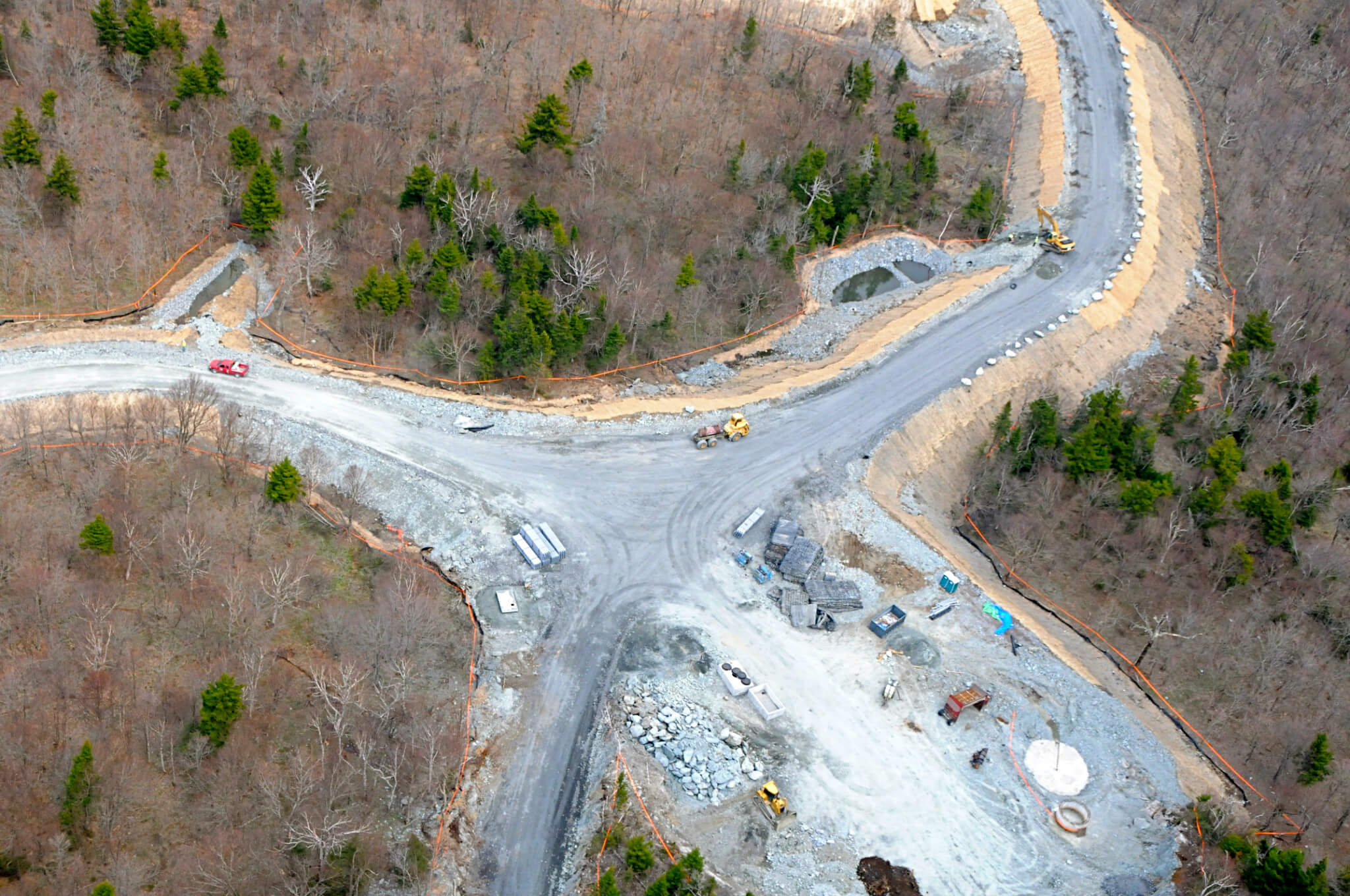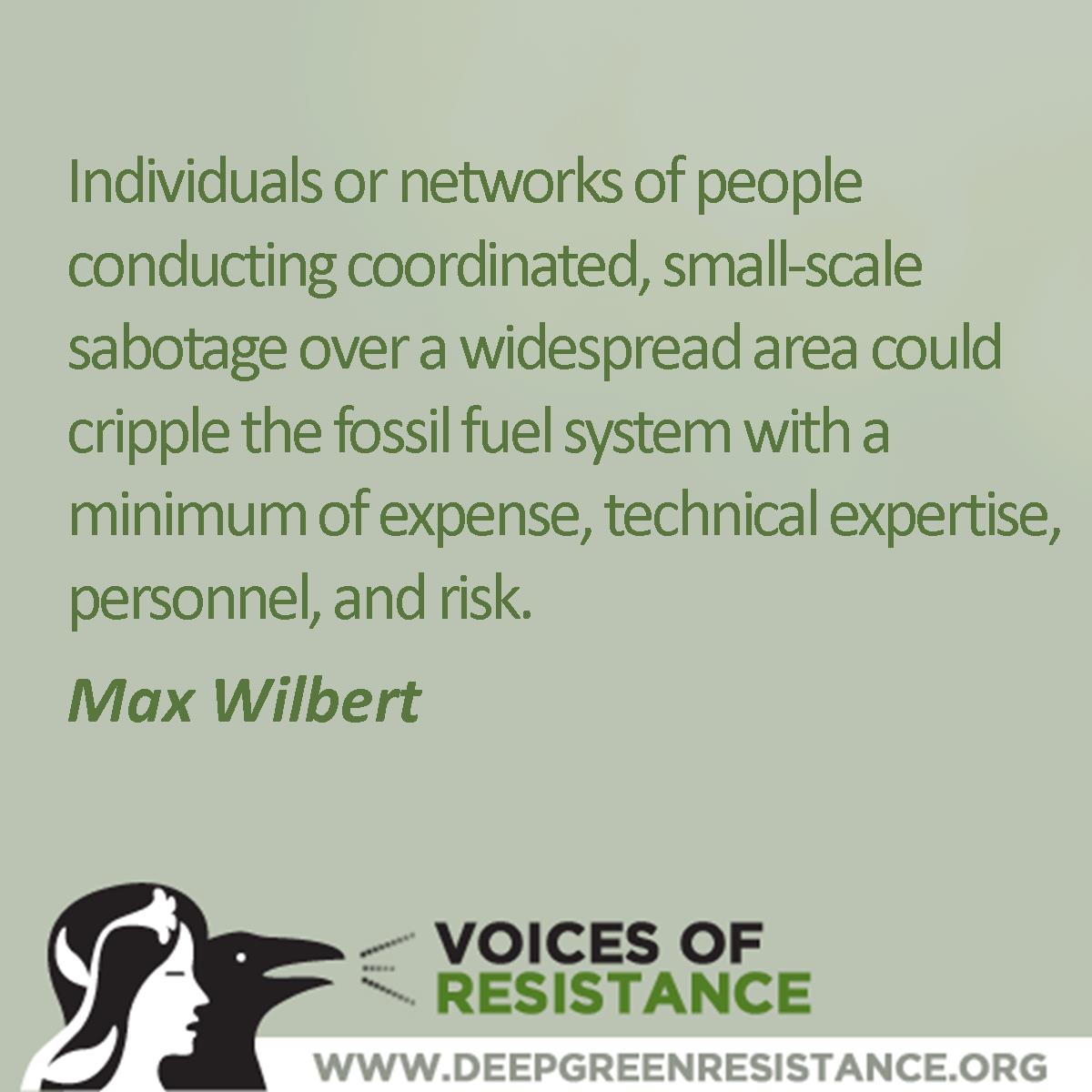
by DGR News Service | Sep 29, 2020 | Culture of Resistance, Movement Building & Support, The Solution: Resistance
Excerpted from the book Deep Green Resistance — Chapter 15: Our Best Hope by Lierre Keith.
Featured image: Felix Mittermeier via Unsplash
3. Deep Green Resistance must be multilevel.
There is work to be done—desperately important work—aboveground and underground, in the legal sphere and the economic realm, locally and internationally. We must not be divided by a diversionary split between radicalism and reformism. One more time: the most militant strategy is not always the most radical or the most effective. The divide between militance and nonviolence does not have to destroy the possibility of joint action. People of conscience can disagree. They can also respectfully choose to work in different arenas requiring different tactics. I can think of no scenario in which a program to provide school cafeterias with food straight from local, grass-based farms would be advanced by explosives. In contrast, a project to save the salmon would do well to consider such an option.
Every movement for justice struggles with the subject. Violence, including property destruction, should not be undertaken without serious reflection and ethical, even spiritual, investigation. Better to accept that as individuals we will arrive at different answers—but that we have to build a successful movement despite those differences.
That shouldn’t be hard, considering that this entire culture has to be replaced. We need every level of action and every passion brought to bear. The Spanish Anarchists stand as a great example of a broad and deep effort to transform an entire society. Writes Murray Bookchin, “The great majority of these [affinity] groups were not engaged in terrorist actions. Their activities were limited mainly to general propaganda and to the painstaking but indispensable job of winning over individual converts.” The café was where all that discussion and proselytizing happened, just as it happened in pubs for the Irish and the IRA. The anarchists in Barcelona took over railroads, factories, public utilities, retail and wholesale businesses, and ran them by workers’ committees. They also created their own police force to patrol their neighborhoods, and revolutionary tribunals to mete out justice. Before the Fascist victory, the anarchists in Andalusia created communal land tenure arrangements, stopped using money for internal exchange of goods, and established directly democratic popular assemblies for their governance. They also started over fifty alternative schools across the country. Their educational ideas spread through Europe, landing in England where they were taken up by A. S. Neill at his famous Summerhill. From there, the concept of free schools migrated to the US. If you are involved with any student-directed, alternative education, you are a direct descendent of the Spanish Anarchists.
Every institution across this culture must be reworked or replaced by people whose loyalty to the planet and to justice is absolute. A DGR movement understands the necessity of both aboveground and underground work, of confronting unjust institutions as well as building alternative institutions, of every effort to transform the economic, political, and social spheres of this culture. Whatever you are called to do, it needs to be done.
It is unlikely that a political candidate on the national or even state level will have a chance of winning on a platform of truth telling, at least not in the United States. The industrial world needs to reduce its energy consumption to that of Brazil or Sri Lanka. That this reduction is inevitable doesn’t make it any more palatable to the average American, who will likely only give up his entitlement when it’s pried from his cold, dead fingers. At the local level, the political process may be more amenable to radical truth telling, especially in progressive enclaves. For those with the skills and interest, running for local office could yield results worth the effort. It could also scale up to other communities. What kinds of institutional change could be affected at the local level is a question worth asking.
From outside, a vast amount of pressure is needed to stop fossil fuel and other industrial extractions. Legislative initiatives, boycotts, direct action, and civil disobedience must be priorities. We need to form groups like Climate Camp, which started in 2006 with a teach-in and protest at a coal-fired plant in West Yorkshire, England. They’ve blockaded the European Carbon Exchange in London, protested runway expansion at Heathrow Airport, and are taking action against BP for its participation in the tar sands. In their own words,
The climate crisis cannot be solved by relying on governments and big businesses with their “techno-fixes” and other market-driven approaches.… We must therefore take responsibility for averting climate change, taking individual and collective action against its root causes and to develop our own truly sustainable and socially just solutions. We must act together and in solidarity with all affected communities—workers, farmers, indigenous peoples and many others—in Britain and throughout the world.
If the referendums and court decisions and market solutions fail, if the civil disobedience and blockades aren’t enough, a Deep Green Resistance is willing to take the next step to stop the perpetrators.
In the UK, someone is feeling the urgency. On April 12, 2010, the machinery at Mainshill coal site was sabotaged, machinery that was Mordorian in its destructive power: “a 170 tonne face scrapping earth mover.” The coal was slated for the Drax Power Station, “recognised as the most polluting in the UK.”
According to their communiqué:
Sabotage against the coal industry will continue until its expansion is halted.
This is a simple vow, an “I do” to every living creature. Deep Green Resistance remembers that love is a verb, a verb that must call us to action.

by DGR News Service | Jun 28, 2020 | The Problem: Civilization
This piece, originally published on 5th June 2020, calls on us to reject so-called “green technology” as a false solution and instead organize for revolution against industrial civilization. It has been edited for publication here. Join the conversation in the comments.
Green Energy vs. Wild Nature
by Jorge Clúni/Medium
The documentary “Planet of the Humans” generated a lot of criticism. This contributed to its removal on the 25th of May from YouTube over a four-second copyright infringement.
“Renewable energy isn’t perfect,” they all say, “but it’s an improvement over the fossil-fuels now being used.” These thoroughly civilized writers share the desire to continue techno-industrial society, thus missing the core problem of Technology.
Each of them writes with the assumption of a need for continued electrical power, forgetting that electricity is very recent in human existence and unnecessary for human life. Electricity is severely detrimental to the proliferation of wild Nature, of which humans are but one species.
So honed-in to defending renewable energy’s “efficiency” and affordability are the film’s detractors, they do not ‘see the woods for the trees’. Cathy Cowan Becker’s rebuke of the film is one of the better critiques, but through all its numerous citations of the documentary’s supposed statistical errors it really amounts only to having found some typos.
The main point consistently being missed, writes the film’s director Jeff Gibbs (responding to claims of “old data”), is that “solar, wind, and electric technologies are not something separate from a giant fossil-fuel based industrial civilization; they are one and the same.” The critics miss this point. Technologies are burning polluting fuels and fouling the atmosphere with carbon dioxide. Other technologies also cause harm.
The essential problem is that technology always comes to exist in exchange for a sacrifice of wild Nature. It always has unforeseen and unforeseeable consequences which inevitably impinge upon naturally-occurring freedoms for humans and non-humans. Even a superficial look over the history of technological advancement reveals precisely this. This holds true for the ‘green energy tech’. As noted by Becker, the closing scenes of the documentary show orangutan-habitat destruction due to industrial scale food manufacturing. This atrocity which will only be remedied through a dramatic decline in the demand for and production of civilized-manufactured foods; by the collapse of industrial civilization.
The degree to which we face, accept and embrace the collapse of civilization, regardless of the hardships it may entail, demonstrates the degree of our love for (and defence of) wild Nature.
In hopes of impeding rampant consumption of our Earth, Becker puts forth five common economist-suggested assessments of growth and success, but each of these trite suggestions are undeniably vague: “good jobs, well-being, environment, fairness, and health”. They can all be judged subjectively (as met or unmet), so they’re useless.
Like the wise who pull out the roots rather than hack the branches (paraphrasing H.D. Thoreau), we must aim efforts on one grand goal – that is, saving Nature beyond human control — even if it isn’t as easily achieved as less-effective alternatives we might be allowed to enact (e.g., minimal pollution regulations, the Green New Deal, subsidized contraceptives, et cetera). That goal should be the forced collapse of the worldwide industrial-technological system (industrial civilization) which creates the problems plaguing us. That is the only single goal which will adequately resolve our dilemma.
Socialism alone is no answer.
The control of a governing class in Cuba, China, and Bolivarian Venezuela are provided at the sacrifice of wild Nature and by human’s dissociation from Her. Cuba imports oil for the same reason that Venezuela pumps and burns and exports its own crude reserves, which is to — at best — deliver a better quality of civilized (read: unnatural, subordinated) life.
Mao’s ‘Four Pests’ extermination campaign was explicitly designed to improve living for China’s assimilated humans at the expense of the non-human “pests”. The government’s horrendous South-North water re-routing project might ‘benefit’ 100M people by diverting 44.8 billion cubic meters of water, but only at the expense of non-humans who will henceforth be deprived of the pre-existing natural waterflow.
You can’t make a techno-industrial-power and economic-growth omelette without breaking Nature.
Capitalism is clearly incompatible with the continuation of wild Nature; copper, gold and lithium are taken from Nature, and can land be seized and converted to allow palm oil or chocolate or beef to be grown?
This does not mean that alternative economic systems which perpetuate a reliance upon (or subservience to) industrial technology will abandon the game of amassing technological power and instead let Nature thrive, uncontrolled and wild: Whatever else can be said of the self-proclaimed socialist nations, they are indisputably seeking economic growth just as much as the capitalist countries, the very concept being predicated upon the transformation of free Nature into uses designated exclusively for Civilized humans.
Everyone knows that a better material “standard of living” as judged by Civilized measures is not provided when people live freely to engage with Nature, beyond civilization’s economics, foraging and hunting so long as they and their tribes are capable of it — and dying without immediate high-tech medical interventions, too. Rather, technology demands that Nature must be conformed and adjusted and as reward for this civilized people will be given more damaging comforts and detrimental conveniences: indoor plumbing, heating and cooling, refrigeration, rapid long-distance transportation, “healthcare” (to repair the body of the most apparent damages caused by civilization). Benjamin Franklin noted in 1753 that the natives don’t seem to prefer civilization, and even his fellow Whites who’d been among the Indians were more inclined to return to them after being ‘rescued’ — an odd reality to reconcile with the notion of its improving living conditions.
Living in Balance
The occasional lack of food for humans in any region is just one of the realities of life on Earth.
It isn’t unfair or unjust when there is a drought, or when the large game animals move, and a tribe no longer has food in that area and has to migrate. That doesn’t harm our entire species, though agricultural food has indeed hurt human health, just as its land takeovers eradicate entire species. Nor is it a tragedy or insufferable cruelty when conditions don’t allow for menstruation or offspring-conception or infant-nursing. It is simply the law of the land, something which all other creatures experience when being provided-for by Nature — and also being limited by it.
To live this way, accepting the good and also the bad, would be humanity living among and with Nature, not exceptional, nor beyond its ways of operating. Ending the techno-industrial system will take the modern agricultural system with it — thereby mostly re-wilding the biosphere and freeing most of an imprisoned Nature.
To sustain oneself on fresh forage and local wild game is the healthiest diet we can have, and the mental dexterity and physical exertion required easily surpasses the routine, apportioned exercising performed at a gym. One can look to numerous beneficial facets of the nomadic forager-hunter lifestyle in contrast to the detriment of sedentary city-dwelling, even in the earliest days of agrarian culture.
While clans living in Nature are indeed subject to the caprices of “the gods” or the chance (mis)fortunes of natural weather (and simple bad luck) they are not subjected to market fluctuations depriving them of a meal, nor do they suffer from faraway chain-of-supply disruptions, as we in Civilization are burdened with. With ‘only’ 10,000–12,000 years of full-time agriculture delivering constant food surplus, we’ve managed to transform the Earth. Hasn’t it been long enough now, don’t we have 20/20 hindsight to see that it isn’t working?
For all our years of constantly feeding people we keep generating more people, Do we want to undertake yet another intervention and set about altering that ancient, deeply-embedded natural inclination to have children rather than simply end the relatively far more recent means by which we produce food surpluses to yield global population growth (and deforestation)?
Power Plants and Destruction
Becker mentions legal requirements of environmental-impact review for any proposed new power plant; of course, even if nothing bad ever resulted at any places given approval, it is inconceivable that any agency would rule the majority of power plants detrimental to their local environs and order them shuttered — the nation’s electricity-generating simply won’t be ended without a revolutionary movement to force it, because the technological system demands that electrical power be delivered, regardless of the consequences to Nature (and people).
Moreover, the laws today can (and do) change tomorrow. It seems like every year of this President has generated an outcry about his nullifying EPA regulations which were enacted under the last President. Do we continue to gamble the future of humanity and all the rest of Nature on reversible legal policies? Any policy which restricts a specific technological means will eventually break under the push of technology overall; for permanent prevention of damaging technological impacts, the technical ability must be totally removed from existence. This is one reason why coal has not disappeared, though market forces in some areas have diminished its appeal (profitability).
All the frequent mentions by ‘green tech’ cheerleaders that coal plants are closing in the USA or Europe give the false impression that coal will no longer be torn from Earth and burned; in reality, it’s being sold by everyone to anyone who’ll buy it, providing “economic growth” and “increased standard of living” in exchange for its usage, definitely polluting the air and adding mercury to the oceans and undoubtedly increasing their rate of material consumption (as mentioned earlier), but only potentially (and not evidently) diminishing their population growth.
Renewable Energy Doesn’t Displace Fossil Fuels
Effectively, renewables simply add a non-emitting source for electrical power rather than replace any existing fuels.
While there is a baseless hope, or a theory or prediction, that wind- and solar-generated energy will supplant the dirty fuels presently used most, there is absolutely no guarantee of this; were it to happen, it would be contrary to all history of industrial fuels: the access to crude oil (and later refined diesel) did not end the usage of coal, nor did the utilization of oil and gasoline prevent the development of uses for and extraction of natural gas. (Similarly, natural materials which had little utility decades ago have since been put to industrial uses and so are now valued, resulting in the increased destruction or alteration of vast swaths of wild Nature in order to obtain those resource deposits.)
So not only has techno-industrial society sought out and laid claim to all available coal, oil, and natural gas accessible beneath our planet’s surface, but now it wants to take the sunlight which lands on the surface and the wind which flows over it, too. Was it forgotten that evolved organisms currently utilize the sunlight which falls on them, or do these non-humans not matter if consideration of them limits Civilization staying electrified?
Electricity and expendable fuel consumption has gotten more efficient, but has electricity demand ever diminished in all the time of transition between different fuels? Of course not, and the Jevons Paradox informs us that efficiency increases always bring consumption increases.
That ‘renewables’ are becoming cheaper and renewable-powered machines more efficient may sound good, but the only real limit on consumption is imposed by price. If solar energy is generated for at least one-third of every day, and wind the same, and it’s incredibly cheap because it’s unlimited, its use will inevitably be maximized, not only by individuals leaving the lights or A/C running but also with flying and driving all around the planet. The problems of this inhuman technological movement and the land-contouring it brings (and largely requires) go far beyond its levels of CO2 released now, but the prevailing thought would be “Well it’s not polluting” or “But it’s not costing us”, or “At least it’s not fossil-fuel powered”.
Power Corrupts
Let’s disregard the horrible things that industry and government would do with limitless, non-polluting electrical energy.
Even still, residential and individuals’ uses of electricity are incidental to power plants’ generation of it; industrial demand exceeds residential by magnitudes, and is in fact the reason power plants are operated. If renewables can actually provide for all present residential use, the demand will not cease at this present level. And what will fuel industry’s demand? Hydrocarbons while they are available, but further development and deployment of the renewable-energy technologies would go on, because the addicted are never sated.
Even if that entails ‘only’ more solar panels and windmills and no further use of coal, gas, or oil, the ‘green tech’ would be interrupting the natural flow and fall of wind and sunlight upon our Earth, a characteristic of life here conservatively estimated at billions of years old. Is that audacious, hubristic entitlement of Civilization not shameful, and potentially (if not probably or obviously) perilous? Some critics of the documentary falsely claim that the film advocates fossil fuels, while others bemoan that it gives the fossil-fuels industry ‘ammunition’.
With only a bit of checking we can see the true priorities of the film’s attackers. For example, Ketan Joshi’s website reveals his bona fides for discussing ‘renewable energy’ — disqualifications to any claims of being out to save Nature: “I did a science degree at Sydney University, and since I was a teenager I’ve loved science, technology, philosophy and psychology. I worked in the renewable energy industry for about eight years…”
While his page greets visitors with a picture of a robot, he does not at all mention a love for wild Nature, only his work for the (oxymoronic) ‘green tech’ industry, which has gone from professional to pro bono. In any case, it doesn’t indicate a loss of ethics or giving aid to the hydrocarbon industry to agree with Exxon that 2+2=4, it is merely an undeniable truth to be recognized by all parties; to cite some promotion of the film by fossil-fuel loyalists is simply casting the shadow of a bogeyman in order to darken a truth which ought to be recognized by opponents.
The Non-Profit Industrial Complex
If we only scratch the surface of why the hydrocarbons defenders might advance this film which critiques ‘green energy’, we can see how their view actually aligns with the criticism of the documentary by prominent professional ‘green’ leaders.
At best, the environmentalists reveal that they agree with the point being made by the Oil, Coal, & Gas lobbyists who say, “If solar and wind won’t do any better, you might as well stick with what you’ve got — you certainly don’t want to give up electricity!”
This is precisely what liberals like Bill McKibben and Naomi Klein and Josh Fox are all worried about,that people will so value the maddening and addictive technological garbage of the modern era that they will simply settle for baking the planet to death. But not only do humans not need any of the electrified stuff we daily engage with, it actually worsens our lives, dividing us from connecting with Nature and even other people, physically, face-to-face, in-person.
For 200,000 years humans just like us lived in small groups, deeply connected to their people, relying upon and aiding their fellows, competing against outsiders (thus giving each one well-balanced traits for making allies and facing enemies, ensuring security and confronting threats, developing wholly with both offense and defense ).
Yet, only 220 years after the first use of electric power, most people who think themselves environmentalists are now debating whether the use of windmills or solar panels can suffice for providing enough electricity (an unnecessary extravagance) to make it worthwhile to stop using fossil fuels and thereby avoid destroying our only lifeboat in the sea of the entire Milky Way. And when the insanity of that is challenged, when “Planet of the Humans” says we need to pull the needle out and clean up, get sober and face reality, the reaction is to shout down the messenger.
Infinite Electricity
Think about what would be done with infinite electricity, based on what has been and is now being done already.
We need to have electricity (without the CO2) so that video games and “binge watching” can continue? So that aerial drones (for surveillance or assassinations) don’t need to land for refueling? So that cyber-bullying and fake news and child porn can proliferate despite all controls attempted?
If this is raising the ‘standard of living’, why do we have so many unhappy people who kill themselves (and, increasingly, others before themselves)? The 40,000 annual suicides in America are surely only a fraction of all the people miserably unsatisfied by life in fast-paced techno-industrial civilization who don’t succeed in attempting to end their lives; how many more are medicated into accepting their discontentment? When will we reclaim our dignity as a species that survived for at least a couple hundred millennia but are clearly unable to cope with modern conditions, and also blind or hopeless to altering them?
People existing in Nature rarely become so miserable and seek to end their lives. This is a unique attribute of the civilized. Facing challenges and working diligently to overcome adversities is rewarding and builds confidence, just as it provides its own intrinsic value to people.
Civilization is what the renowned Desmond Morris referred to as “The Human Zoo” with the title of his 1969 book.
Simply imagine for a minute, eating only the foods our species is adapted to, which you (or a close friend who lives among you) have obtained, and being with your children; imagine children of all ages playing together, each of them acquiring every skill and material item they need to live well, simply from being in the suitable natural environs to which they are adapted, and being around their parents and emulating them; imagine getting intimately acquainted with your bioregion, not being crowded like industrial-agriculture’s chicken in a growing-warehouse.
Imagine being free from the psychological toll of potential annihilation via nuclear conflict, being free of worries over the forecast of (induced) sea-level rise, or not suffering a tech-facilitated viral contagion greatly worsened by heavily-polluted air (not merely the ‘greenhouse gases’).
Imagine shedding the burden of existential crisis because we actually stop the worsening potentials of Technology, which grows more autonomous by the day due to the vile works of lauded scientists and technicians.
Modern Existential Fear
Even those involved in Technology’s advance are seriously worried about it, but feel powerless to stop it, because they will not look to revolution which is required. And for being milquetoast and servile to the technological system, Bill McKibben, a most prominent advocate of renewable energy, gets to soak up the limelight and be heralded as an environmentalist leader. He often has grand platforms (Rolling Stone, frequently, and recently “60 Minutes”) to extol the talking points of the Green Energy industry (for which he volunteers), in addition to deflecting valid criticisms which might otherwise awaken sincere but misdirected people.
Were he to take a more oppositional, or boldly confrontational position against the menace of further technological progress. McKibben would be marginalized and replaced by another figurehead for false hopes of a techno-salvation to come. McKibben — who on May 6th, 2020 declared that one of rural America’s biggest problems is a lack of consistent and reliable WiFi signals — measures quite poorly against even the timid academic-philosopher class who at least named the enemy as Technology itself: Martin Heidegger, Jacques Ellul, Lewis Mumford, Neil Postman, Chellis Glendinning; while none of them were brave enough to unequivocally state that only a revolutionary movement will be able to depose technoindustrial civilization and free all the inhabitants of Earth from the controls imposed by Technology, at the very least they recognized the primary source of the problem.
This documentary also does so, in the seventeenth minute, when its director’s narration rhetorically asks:
“Is it possible for machines built by industrial civilization to save us from industrial civilization?”
Only if they are used disruptively, against the continuation of techno-industrial mass-society and to allow the revival of wild Nature.
The Green “Misleadership” Class
The so-called ‘green leadership’ offered within technological society will never point attention at industrial civilization itself. The cabal of professional ‘Greens’ primarily act as steam-valves to relieve any serious tension or resentment against technology, a sentiment which has constantly increased due to the knowledge — both reported and personally felt — of the ever-worsening destruction of Nature, in addition to the misery of modern humans enduring techno-industrial society.
“The idea that societies could collectively decide to embrace rapid foundational changes to transportation, housing, energy, agriculture, forestry, and more — precisely what is needed to avert climate breakdown — is not something for which most of us have any living reference.” — Naomi Klein, April 2019
When she wrote those words, Klein had in mind merely that a popular movement be developed to press for enactment of legislation which is itself only vaguely imagined by the Green New Deal resolution of the US House of Representatives. She was not thinking of revolutionary action, which is never advanced by a mass of millions, nor the revolutionary sentiment which can’t be satisfied with legislative appeasement from the existing powers.
Naomi Klein is not a revolutionary, not in spirit or thought. If we are to save the wonderful spirit of free and wild Nature, that caretaker of all beings on Earth, we need to understand that the green leaders put forth by the technological system are the most reactionary and conservative of environmentalists to be found. Their prominence serves as misdirection for those who are truly fed-up with the killing of Nature, those who live with and deeply love the land they are acquainted with, those unwilling to watch the natural world be sacrificed for the sake of civilized greed.
Rather than putting hopes and prayers into some new technology which might deliver the ‘Diet Coke’ fix for techno-industrial society — that is, all the same “great” benefits with none of the currently-known downsides — we need only hopeful optimism that our commitment and effort can make successful a revolution against the technological system. Indeed, while many a Leftist is inherently a pessimist, defeated before they even begin, truly the only reason that revolution seems not to be possible is that it is not thought to be possible.
When people stop awaiting a savior (whether man or machine) and begin to see and believe that revolution can indeed be undertaken and achieved, then in reality it can be.

by DGR News Service | May 22, 2020 | Biodiversity & Habitat Destruction
Grassroots activist Suzanna Jones challenges the idea that green energy is good and rebukes the corporations and ideologically-captured organizations who promote it.
By Suzanna Jones
The recently released documentary Planet of the Humans takes direct aim at the major threat to the Earth.
It does this by asking fundamental questions: can Nature withstand continued industrial extraction; can humans – particularly those in the dominant West – persist in taxing the natural world to fulfill our own ‘needs’ and desires; is ‘green’ energy the savior for our climatic and environmental problems or is it a false prophet distracting us from confronting the gargantuan elephant in the room, what writer Wendell Berry calls “history’s most destructive economy”?

New roads built for the Lowell Wind Energy site in Vermont destroy and fragment important wildlife habitat for black bears, moose, and bobcat among others.
The Hypocrisy of Mainstream “Environmentalism”
Filmmakers Jeff Gibbs, Ozzie Zehner and Michael Moore don’t just ask questions, they highlight the hypocrisies of big shots like Al Gore and the national Sierra Club. Even Vermont comes in for less than flattering commentary. Planet of the Humans depicts Green Mountain Power‘s ridge-destroying Lowell Mountain industrial wind project, Burlington’s McNeil wood-burning electric generating plant, and Middlebury College’s biomass gasification facility as examples of the renewable energy delusion. And Bill McKibben, Middlebury’s Scholar-in-Residence, is cast as a string that connects all three.
The film has struck a nerve. Those depicted unfavorably have reacted. Some who admit to having enjoyed Michael Moore’s filmmaking strategy in the past don’t find him so funny this time. The criticisms reveal how much power and money lie behind the renewables-as-savior myth. With so much at stake, the industry and big environmental organizations have little appetite for discussing or even acknowledging the unsavory side of the technologies. And ultimately, the core issues remain unaddressed; the most important things remain unspoken.
Sustaining the Planet vs. Sustaining Industrial Civilization
Frankly, the green energy ‘movement’ is really about sustaining our way of life and the economic system that it depends upon, not the health of the biosphere. Capitalism is brilliant at co-opting anything that resists it. Green energy – like much of the broader environmental movement – is no exception. It’s business-as-usual in camouflage.
Back when Green Mountain Power’s bulldozing and blasting began at Lowell Mountain, a group of locals organized ‘open-house’ walks up the mountain to view the devastation. Hundreds attended these fall/winter treks. Shock and heartbreak were the usual response. Bill McKibben was personally invited to attend. Though his response was polite, he would not be coming. He dismissed our concern for the mountain as “ephemeral.”

Ephemeral?
That word underscores what has gone so terribly wrong with green energy “environmentalism.” Something is absent. That something? Love. Love of the places and living beings that are suffering or being destroyed so that we can live our electronic, nature-less existence. Affection for the natural, non- human world is missing in the discussions about climate, carbon and techno-fixes. Nothing seems to matter now but humans and their desires.
“Although it’s morally wrong to destroy the land community, people are going to sustain it, not because it’s morally right but because they want to; affection is going to be the determining motive”, Wendell Berry has explained in the past. “Economic constraints might cancel out affection, but genuine affection is going to be the motivating cause.”
The Moral Basis of Organizing for Justice
Without affection, we’re more likely to thoughtlessly sacrifice living beings on the altar of economics. When the film reveals who is paying the ultimate price for our ‘green’ energy consumption, we recognize affection for the casualty it has become. We are half-asleep, anesthetized by the barrage of meaningless marketing, with its hollow premise that we can continue to consume our way to happiness.
As I was planting in the garden this warm, spring day, the returning swallows joyfully zipping overhead made me stop. Usually this ritual is accompanied by the background droning of distant car traffic, but due to the pandemic, the infernal engines were silent. It made me wonder. Can we live in healthy reciprocity with the natural world? Can we make the shared economic sacrifices that are necessary or will we continue to sacrifice Nature? Can we make drastic reductions in consumption and live more local, less materially prosperous, more fulfilling lives? Can we replace modernity’s painful alienation from Nature with a genuine sense of intimacy, affection, meaning and responsibility? Will those in power let us? Will we allow them to decide for us?

On of 21 wind turbine pads at Lowell Wind Project in Vermont.
Our way of life is inherently unsustainable. We can’t buy or build our way out of this one. Yes, the climate crisis is both undeniable and existential, but it is not the only way the Earth is being destroyed. Simply changing the fuel that powers our destructive, planet-killing system is not a solution.
Planet of the Humans challenges our assumptions and our arrogance. It asks us to face what we have done, experience the grief, and then allow our hearts to consider an entirely new path into the future.
Suzanna Jones lives off grid on a small farm in Northern Vermont. She has been fighting injustice, destruction of the land, and industrial wind projects for decades and has been arrested several times.
Wildlife images by Roger Irwin depict native wildlife near the site of a proposed wind energy facility on Seneca Mountain. That project was canceled due to community organizing in opposition. Aerial photographs by Steve Wright depict Lowell Wind Energy Facility. Check out this photo essay on the impact of “green” energy on mountain landscapes.
To repost this, or any other original DGR content, please contact newsservice@deepgreenresistance.org








